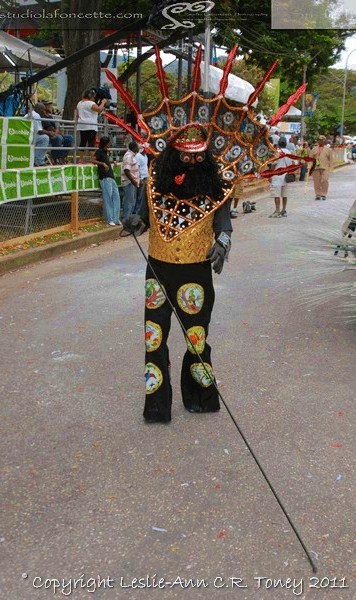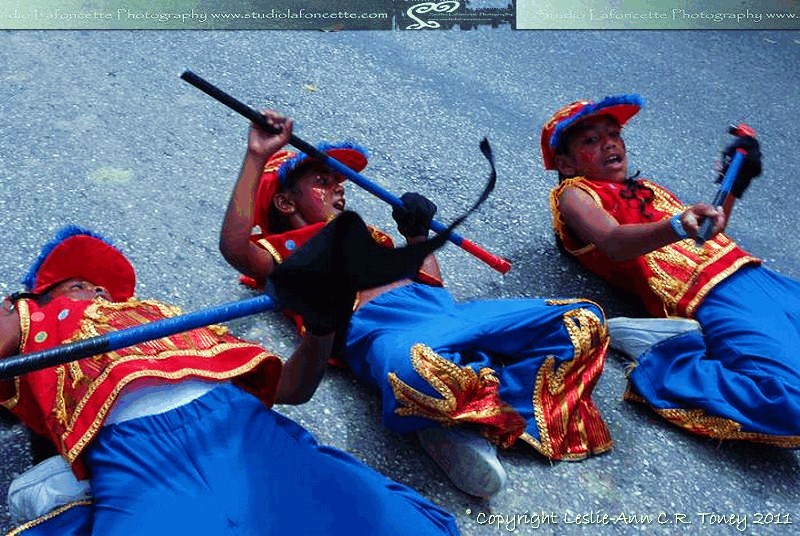Sailor Mas is another element of connectedness with the rest of the world that is evident in Trinidad & Tobago carnival. According to Hollis Liverpool,* during the Canboulay Riots of 1881 the British colonial government stationed British war ships in the harbour. In 1907 there was a visit of a US war fleet to Trinidad, which influenced the surge in sailor mas from that time until 1946 or so. These events brought a reaction that had been seen before in Trinidad carnival. The seriousness of a military presence and the image of power over the oppressed was responded to with jamette carnival.
The sailor in Trinidad carnival was a response to this show of might, they mocked the authority and engaged in the same abhorrent behaviors as before – taunting and tormenting the middle class and the elite. Masqueraders wore simply fashioned costumes made with undershirts, papier mache goggles, stockings for face masks.
In 1941 a US naval base was established in Trinidad, which significantly influenced the modern sailor mas. Nationals who had migrated would frequently return for carnival with epaulettes, medals, and other parts for the costumes, which made them look authentic. Liverpool mentions that a favourite passtime of young men was also to snatch hats off of sailors. The sailor portrayal also depicted the behavior of servicemen when they came ashore. “Bad Behavior Sailors” played drunk, wore underware outside of their clothes, carried baby bottles, harassed women and were generally disorderly – as were the actual sailors on passes from their stations. They sometimes enacted a special dance with fancy footwork, several sailors dancing from side to side in horizontal rows. Sailor mas Sparrow’s Jean and Dinah are two calypsos the capture the sentiments of the populace about the impact of soldiers’ presence – at least on relations and economics.
The Fancy Sailor, apparently, is the result of a clamouring for more “pretty” mas by the middle classes. This new category of sailor mas became prominent in the mid 194os. Sailors were also associated with steelbands, the most impactful one, according to Liverpool, being Desperadoes in the 1950s depicting an American film, with their members outfitted in full military regalia.
Hollis Liverpool, Rituals of Power and Rebellion, pp 360-361. http://www.amazon.com/Rituals-Power-Rebellion-Tradition-1763-1962/dp/0948390808/ref=sr_1_1?ie=UTF8&qid=1298483690&sr=8-1









2 thoughts on “Sailor Mas (BdC 16/36)”